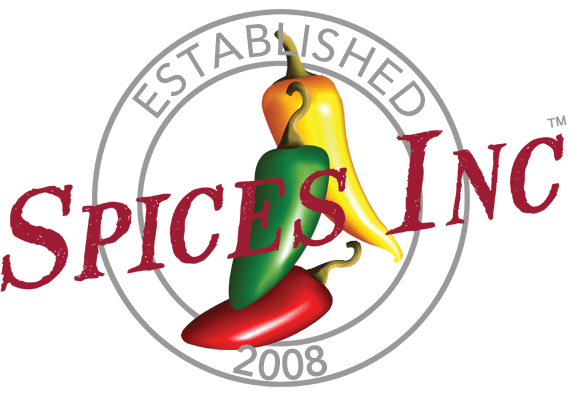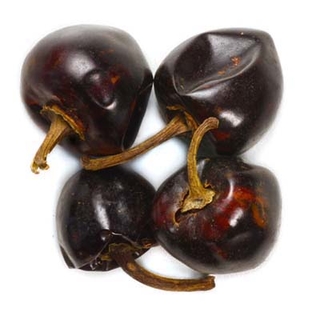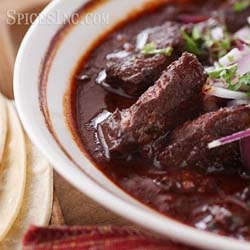Cascabel Chiles
Cascabel Chiles
Cascabel Chile (KAS-ka-bel), Capsicum annuum, are mild chiles and measure 1,500-2,500 Scoville Heat Units (SHU). They are also called cascabel pepper, cascabel chili, or chile cascabel. These peppers are mahogany brown, thick skinned, and have a light and nutty aroma.
These peppers are round like a ball and are roughly 1½ inches in diameter.
The word cascabel means “jingle bell”. It is called this because the seeds of this dried pepper rattle around inside the pepper when you shake it. It almost sounds like a maraca.
There are approximately 10 chiles per ounce.
Businesses that frequently purchase Cascabel Chiles are Mexican restaurants and cafes, spice shops, breweries and distilleries.
One whole Cascabel pepper equals 1/4 to 1/2 teaspoon of powder.
Flavor Profile
This chile isn’t sweet but a bit acidic, slightly smoky, and woody, with undertones of tobacco and nut.
Heat Level
At 1,500-2,500 SHU, Cascabels have a friendly, mild level of heat.
How To Use
Cascabels go well with acidic foods like tomatoes or tomatillos, so stir them into Roasted Tomato Salsa or Roasted Salsa Verde. Pair them with other chiles for complex flavor profiles, and amp up Red Enchilada Sauce. Give even more depth to Pozole Rojo. We love Cascabel chiles in Birria Stew.
Its nutty, woody, acidic flavor is a terrific complement to sweeter and fruitier peppers and helps create complex flavor profiles like Ancho, Pasilla Negro, Guajillo, and de Arbol.
Use Cascabel peppers in casseroles, enchiladas, fajitas, salsas, sauces, soups, stews, tamales and tacos.
| Also Called | Chile cascabel, cascabel pepper, chile de cascabel, cascabel |
| Species | Capsicum annuum |
| Ingredients | Whole cascabel chiles |
| Flavor Profile | Acidic, smoky, woody, with undertones of tobacco and nut. |
| Scoville Heat Units | 1,500-2,500 SHU |
| Recommended Uses | Casseroles, enchiladas, fajitas, salsas, sauces, soups, stews, tamales and tacos |
| Cuisine | Mexican |
| How To Store | Airtight container in a cool, dark place |
| Shelf Life | 1-2 Years |
| Country of Origin | Mexico |
Nutrition Facts
Serving Size1 chile, 3g
Amount Per Serving
Calories10
% Daily Value*
Total Fat0g0%
Saturated Fat0g0%
Trans Fat0g
Polyunsaturated Fat0g
Monounsaturated Fat0g
Cholesterol0mg0%
Sodium2.7mg0%
Total Carbohydrate2.1g1%
Dietary Fiber0.9g3%
Total Sugars1.2g
Added Sugars0g0%
Sugar Alcohol0.0g
Protein0.3g0%
Vitamin D0mcg0%
Calcium1mg0%
Iron0mg1%
Potassium56mg1%
*The % Daily Value (DV) tells you how much a nutrient in a serving of food contributes to a daily diet. 2,000 calories a day is used for general nutrition advice. These values were calculated and therefore are approximate. For more accuracy, testing is advised.



